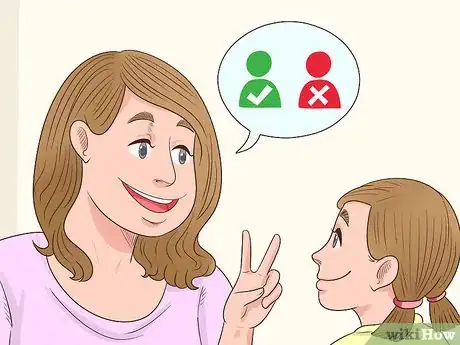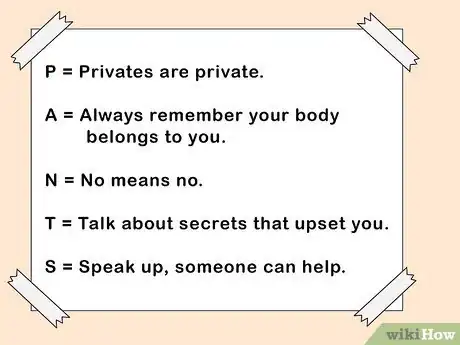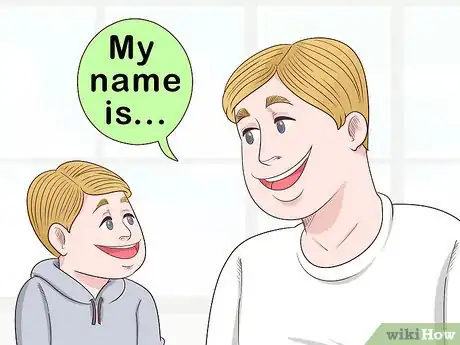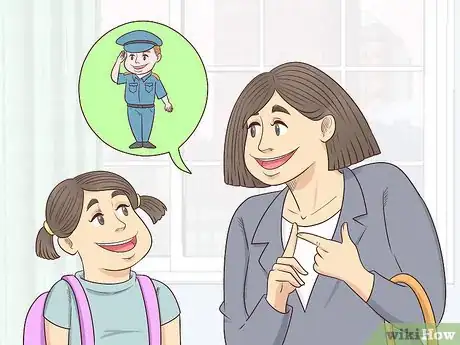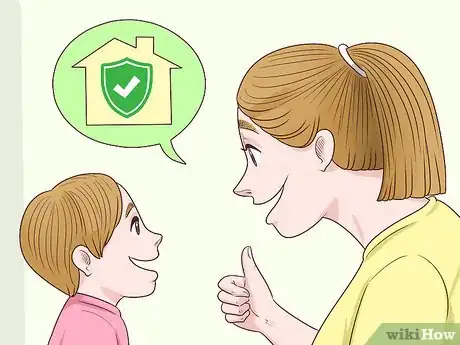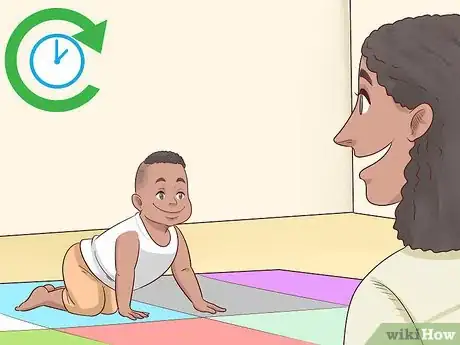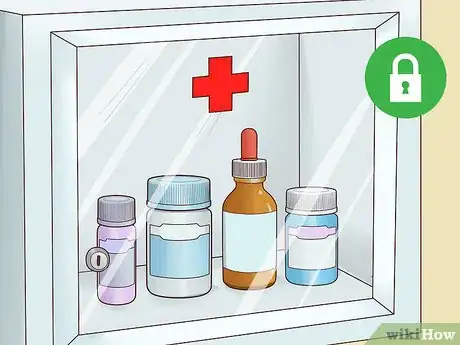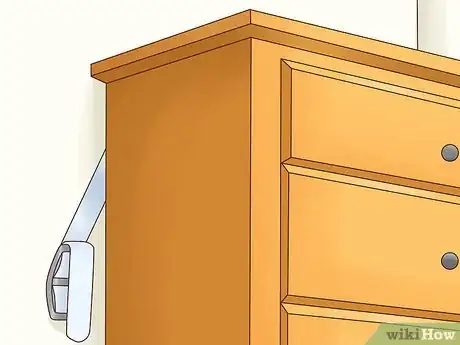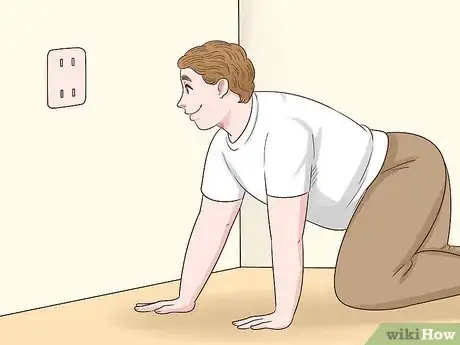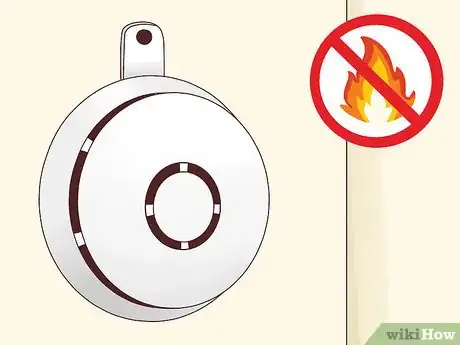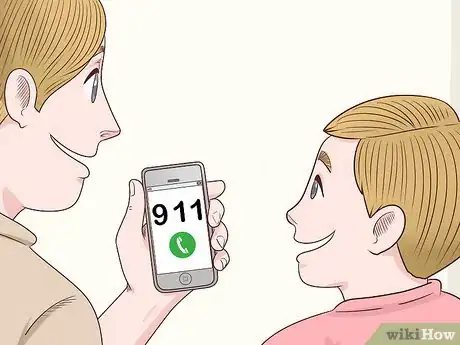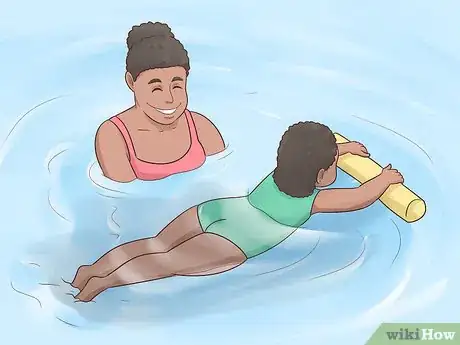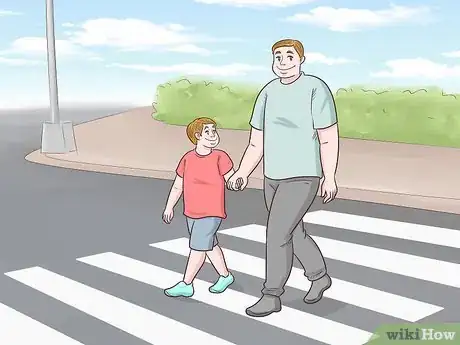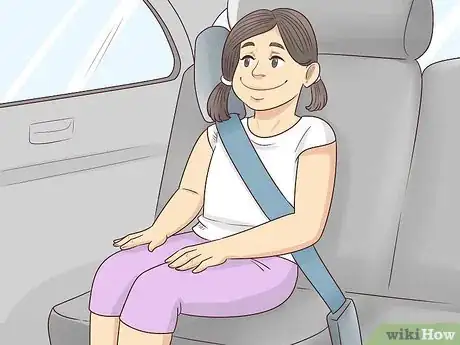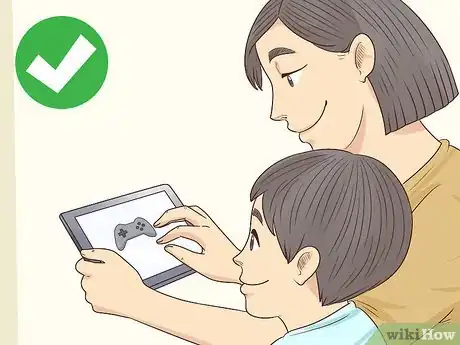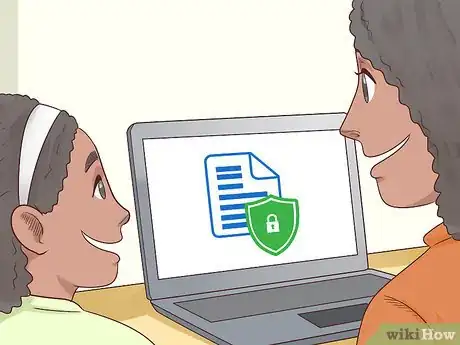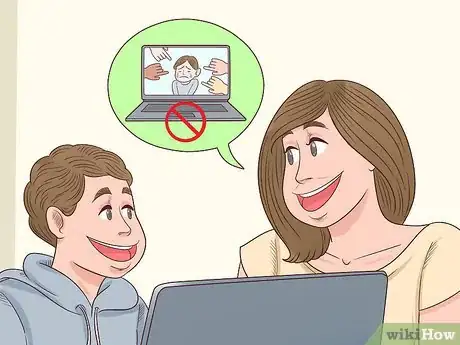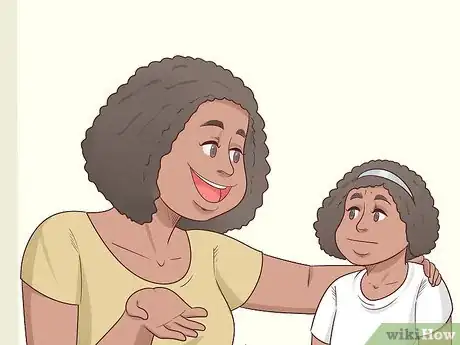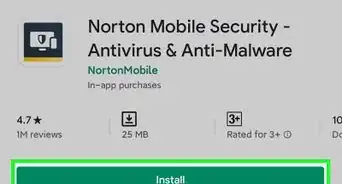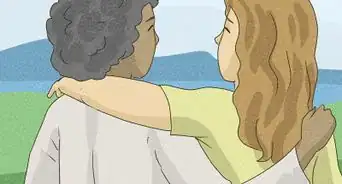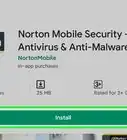This article was co-authored by Saul Jaeger, MS and by wikiHow staff writer, Christopher M. Osborne, PhD. Saul Jaeger is a Police Officer and Captain of the Mountain View, California Police Department (MVPD). Saul has over 17 years of experience as a patrol officer, field training officer, traffic officer, detective, hostage negotiator, and as the traffic unit’s sergeant and Public Information Officer for the MVPD. At the MVPD, in addition to commanding the Field Operations Division, Saul has also led the Communications Center (dispatch) and the Crisis Negotiation Team. He earned an MS in Emergency Services Management from the California State University, Long Beach in 2008 and a BS in Administration of Justice from the University of Phoenix in 2006. He also earned a Corporate Innovation LEAD Certificate from the Stanford University Graduate School of Business in 2018.
This article has been viewed 50,421 times.
In a sense, parenthood is all about letting your child go, little by little, as they grow in maturity and independence. However, with the seemingly endless sources of danger out there, including both dangerous objects and people, letting go even a little may be a terrifying prospect. There is no way to guarantee that you can keep your kids absolutely safe at all times, but you can teach them key safety measures, build their self-esteem and judgment, and make sure you have an open and honest relationship with them.
Steps
Protecting Kids from Abuse or Abduction
-
1Stop teaching your kids "stranger danger". Instead of making children fear everyone they don’t know, clarify that most people are good, but some are not and may try to do bad things. Tell them that while it is not always easy to tell the difference, they should trust their instincts and always feel free to talk to you or ask for help. Keep in mind that most people who will harm your child aren't even stranger; they're people the child knows. [1]
- Lay out some key ground rules, like never accepting offers of candy or rides from strangers, or to get away from someone who is talking or acting in ways that make them feel uncomfortable.
- Your kids need to know they can come to you anytime they feel uncomfortable, so stay calm and supportive when they share concerns with you. Even if you feel stressed or fearful, don't show these emotions to your child, as that can make them afraid to talk to you.
- Additionally, build their self-esteem by communicating with them regularly and answering their questions, no matter the topic. This will give them the confidence to trust their judgment regarding whether a situation or person is dangerous.
-
2Use the PANTS method to talk about preventing sexual abuse. This is never an easy topic for a parent to bring up with their kids, but it is vital to equip them with the information and tools they need. Consult with trusted child safety groups for resources—for instance, you can use the PANTS method:[2]
- P = “Privates are private.” Tell kids that their private parts should always be covered and no one should ask to see or touch them unless you, personally, explain why it’s OK first.
- A = “Always remember your body belongs to you.” Teach them to say “No” and then to tell a trusted adult if someone ever does something or asks them to do something that makes them feel uncomfortable.
- N = “No means no.” Reinforce that they always have the right to say “No” to something that makes them uncomfortable, no matter who the other person is.
- T = “Talk about secrets that upset you.” Teach them the difference between good secrets (e.g., a surprise party) and bad ones, and emphasize that they should never keep bad secrets about something that’s happened.
- S = “Speak up, someone can help.” Converse with them regularly, openly, and honestly so they know they can always come to you, and point out other resources like a guidance counselor or the police.
Advertisement -
3Teach younger kids your name, address, and phone number.[3] Start practicing this with toddlers, and keep quizzing kids about this key information to make sure they remember it. That way, if you get separated, they’ll be able to provide this info to helpers.[4]
- Make sure younger kids know their own name as well: “Can you tell me your first and last name? Good. What about my name?...”
- You might also want to write their name and your phone number on the tags of their clothes, or even stitch labels into their clothes.
-
4Identify meet-up spaces and safe people in case you get separated. When you go out to the store, to a carnival, or anywhere else, take a moment to point out a location where everyone will go to meet if someone gets separated. You might, for instance, point out the service counter at the store.[5]
- Also make sure they know that, if they get separated, they should look for a uniformed employee or someone wearing a security or police uniform for help. If they can’t find one of these people, you might advise them to look for a parent with small children in tow—they can usually be counted on to help.
-
5Allow kids to go only to places you know are safe. Before letting your kid go play at a friend’s house, for instance, you should at least meet the friend’s parents. Even better, accompany your child on their first playdate at the house and make sure it looks and feels safe. Don’t be afraid to ask questions, such as if they have any unsecured weapons in the home.[6]
- Before you leave your children anywhere, make sure they're in the hands of a reliable caregiver who is willing to and capable of supervising them the entire time you're gone. It's a good idea to ask friends and relatives if they ever leave their own child(ren) alone before you leave your child with them.
- Whenever teens leave the house, make sure they tell you exactly where they’re going, how long they’ll be there, and who else will be there. Persist even if they accuse you of nagging or not trusting them.
Reducing Childhood Injury Risks
-
1Supervise younger children at all times. No matter how much child-proofing you do, an unsupervised kid can find a way to risk serious injury. Generally speaking, you should keep your eye on kids who are 5 and under at all times while they’re awake, and you shouldn’t go more than 1-2 minutes without checking on kids ages 6 to at least 8.[7]
- With practice, you’ll learn to complete other tasks while tracking the child out of the corner of your eye. However, make sure your focus never drifts too far away from what they’re doing.
- If you must let a younger child out of your sight, move them to the safest spot for them in your house—their bedroom, for instance, or a playroom enclosed by a toddler fence. Even then, leave them out of your sight for as short a period as possible.
-
2Make sure medications and other dangers are out of sight and reach. Medications can look like candy to younger kids, so they should be kept in their original child-proof bottles and kept in a high, closed, and possibly locked cupboard. Likewise, keep household cleaners behind locked cabinet doors.[8]
- Medications can be a danger for older kids as well, who may be tempted to try or even abuse them in order to experience their effects. Keep close track of your medications, and especially keep an eye out for any missing pills.
-
3Secure dressers and TVs to the wall. Sadly, newscasts regularly report stories of children who are injured or even killed when they pull a dresser or bookshelf on top of themselves. The unsecured furniture becomes even more dangerous if there is a heavy, older tube TV sitting on top of it.[9]
- Most new dressers and bookshelves come with wall anchoring kits and instructions. Use these anchors and secure them properly to the wall—ideally into wooden studs. Some retailers and local agencies might also give out free anchoring kits, so ask around.
-
4Look for dangers in your home from a child’s perspective. For younger kids, this can mean literally getting on your hands and knees so you’re at their height. Look for things like uncovered electrical outlets, unsecured cabinets, bookshelves that are enticing to climb on, dangling curtain cords, loose staples in the carpet, and so on.
- No matter their age, keep in mind kids’ innate curiosity as well. For instance, if you have any guns or other weapons, or even potentially dangerous items like power tools, make sure they are locked away securely.
-
5Make fire safety a family priority. Make sure every bedroom and every floor of your house has a functioning smoke detector, and place multiple carbon monoxide detectors in your house as well. Test them every week and replace the batteries every 6 months.
- Keep at least one fire extinguisher and show older kids how to use it, but emphasize to them that getting out of the house and calling for help is the priority.[10]
- Run fire safety drills and create a designated meeting area outside.
-
6Teach kids how to call emergency services.[11] Toddlers love to mimic grown-ups using the phone, and by around age 5 some kids may be capable of picking up a real phone and making a call. When you feel they’re able, demonstrate how to call the emergency number where you live (e.g., 911) and explain when to call and what to say.
- For instance, if you're at risk for seizures, you might tell them to call “if Mommy falls down and can’t talk to you,” and to tell the person who answers that “my Mommy is having a seizure and needs help.”
- Make sure they understand that they should only call for true emergencies, though, not because their brother won’t share a toy.
-
7Teach your children how to swim. Drowning is one of the leading causes of death for kids. To decrease this risk, sign them up for swimming lessons with trained professionals when they’re preschoolers, toddlers, or even babies—get them used to the water as early as possible.[12]
- However, even if your kids do know how to swim, always emphasize that water can be dangerous. Diving into shallow water, swimming during a thunderstorm, and wading into rip currents, among many examples, can result in tragedy.
- If you have a family pool, make sure it's fully surrounded by a fence that's in good repair. Additionally, always supervise your child while they have access to the pool.
-
8Practice crossing the street safely. When they’re younger, make sure the child holds an adult’s hand every time they cross a street. Both the adult and child should practice looking both ways twice before crossing, and should only cross at designated intersections or crosswalks. Model safe pedestrian behavior any time kids are around.[13]
- Never let a child cross the street alone until they have demonstrated several times in your presence that they will do so safely every time.
-
9Make sure they’re buckled in every time they ride in a car. When they’re young, make sure you install their child safety seat correctly and buckle them in properly. Use a booster seat in the back seat of the car until they’re at least 12, and make sure they always buckle their seatbelt properly.[14]
- You can find more information on child car seat recommendations at https://www.nhtsa.gov/equipment/car-seats-and-booster-seats.
Emphasizing Online Safety
-
1Check out sites, apps, and games together first. Before letting them join a new social network or play a new online game, take time to explore it with them. If you have any concerns, tell them honestly and directly. And, if you feel it is not appropriate, explain why they cannot join without leaving room for negotiation.[15]
- For example: “I’m sorry, but the language and imagery I see here isn’t appropriate for someone your age. Why don’t we check out this site instead?”
-
2Show them how to keep their info private and report inappropriate content. For social networks, make sure they know how to block and/or report users or content that is inappropriate. Also tell them the importance of keeping personal information private—for instance, they shouldn’t give out their address or phone number.[16]
- Teach them that they should act online the same way they act in person, and expect the same of others. This means not sharing personal information with strangers, but also not engaging in or tolerating abusive behavior.
- Instruct your children to never share their personal information, such as their full name, address, phone number, or school information, over social media. Instead of just making it a rule, talk to them about what can happen if the wrong person gets their information.
-
3Restrict their time online, and supervise them when they are online.[17] Keep the computer they use in an open location in your home, or require them to use their smartphone in an open area. Also limit their online activities to specific times of day, unless they are doing work for a school project or something similar.[18]
- Learn about and use the parental controls that are available with the tech they use and the sites they go to. Let them know that you are supervising their activities.
-
4Teach them that online bullying is just as wrong as bullying in person. Reassure your child that they can come to you anytime they feel like they’re being bullied online, whether by someone they know or by a stranger. Tell them you will help them to report and remove the inappropriate content, and lend a compassionate ear if they’d like to talk about their feelings.[19]
- Contact their school or the local authorities if necessary. If your child objects, tell them that it’s important to report bullying because other people may be affected as well.
- If you suspect your child is bullying someone else online, remind them how important it is for them to treat others online with the same respect they would in person. Restrict or remove their online privileges as necessary.
-
5Encourage them to talk to you whenever they’re uncomfortable. Work on building open communication with them so they won’t be afraid or embarrassed to talk to you about problems that might arise while they’re online. Be an active and engaged listener so they’ll feel comfortable coming to you if they’re being bullied online, for example.[20]
- Reassure them that you’re always there to help. This will help build their self-esteem, which in turn will make them more confident in taking action when something feels unsafe.
Expert Q&A
-
QuestionHow can I protect my child as a parent?
 Saul Jaeger, MSSaul Jaeger is a Police Officer and Captain of the Mountain View, California Police Department (MVPD). Saul has over 17 years of experience as a patrol officer, field training officer, traffic officer, detective, hostage negotiator, and as the traffic unit’s sergeant and Public Information Officer for the MVPD. At the MVPD, in addition to commanding the Field Operations Division, Saul has also led the Communications Center (dispatch) and the Crisis Negotiation Team. He earned an MS in Emergency Services Management from the California State University, Long Beach in 2008 and a BS in Administration of Justice from the University of Phoenix in 2006. He also earned a Corporate Innovation LEAD Certificate from the Stanford University Graduate School of Business in 2018.
Saul Jaeger, MSSaul Jaeger is a Police Officer and Captain of the Mountain View, California Police Department (MVPD). Saul has over 17 years of experience as a patrol officer, field training officer, traffic officer, detective, hostage negotiator, and as the traffic unit’s sergeant and Public Information Officer for the MVPD. At the MVPD, in addition to commanding the Field Operations Division, Saul has also led the Communications Center (dispatch) and the Crisis Negotiation Team. He earned an MS in Emergency Services Management from the California State University, Long Beach in 2008 and a BS in Administration of Justice from the University of Phoenix in 2006. He also earned a Corporate Innovation LEAD Certificate from the Stanford University Graduate School of Business in 2018.
Police Captain, Mountain View Police Department Make sure you give them emergency contact information and teach them how to reach out to the numbers properly. If they're younger, supervise what they do on their phones and who they're talking to.
Make sure you give them emergency contact information and teach them how to reach out to the numbers properly. If they're younger, supervise what they do on their phones and who they're talking to.
References
- ↑ https://www.ahaparenting.com/parenting-tools/safety/top_safety_tips_kids
- ↑ https://www.nspcc.org.uk/preventing-abuse/keeping-children-safe/underwear-rule/
- ↑ Saul Jaeger, MS. Police Captain, Mountain View Police Department. Expert Interview. 21 February 2020.
- ↑ https://www.familylives.org.uk/advice/primary/health-and-development/keeping-your-child-safe/
- ↑ https://www.familylives.org.uk/advice/primary/health-and-development/keeping-your-child-safe/
- ↑ https://www.ahaparenting.com/parenting-tools/safety/top_safety_tips_kids
- ↑ https://www.familylives.org.uk/advice/primary/health-and-development/keeping-your-child-safe/
- ↑ https://www.safekids.org/blog/7-easy-ways-prevent-injuries-and-keep-your-kids-safe
- ↑ https://www.safekids.org/blog/7-easy-ways-prevent-injuries-and-keep-your-kids-safe
- ↑ https://www.safekids.org/blog/7-easy-ways-prevent-injuries-and-keep-your-kids-safe
- ↑ Saul Jaeger, MS. Police Captain, Mountain View Police Department. Expert Interview. 21 February 2020.
- ↑ https://www.ahaparenting.com/parenting-tools/safety/top_safety_tips_kids
- ↑ https://www.ahaparenting.com/parenting-tools/safety/top_safety_tips_kids
- ↑ https://www.safekids.org/blog/7-easy-ways-prevent-injuries-and-keep-your-kids-safe
- ↑ https://www.nspcc.org.uk/preventing-abuse/keeping-children-safe/online-safety/talking-your-child-staying-safe-online/
- ↑ https://www.nspcc.org.uk/preventing-abuse/keeping-children-safe/online-safety/talking-your-child-staying-safe-online/
- ↑ Saul Jaeger, MS. Police Captain, Mountain View Police Department. Expert Interview. 21 February 2020.
- ↑ https://www.ahaparenting.com/parenting-tools/safety/top_safety_tips_kids
- ↑ https://www.nspcc.org.uk/preventing-abuse/keeping-children-safe/online-safety/talking-your-child-staying-safe-online/
- ↑ https://www.nspcc.org.uk/preventing-abuse/keeping-children-safe/online-safety/talking-your-child-staying-safe-online/
